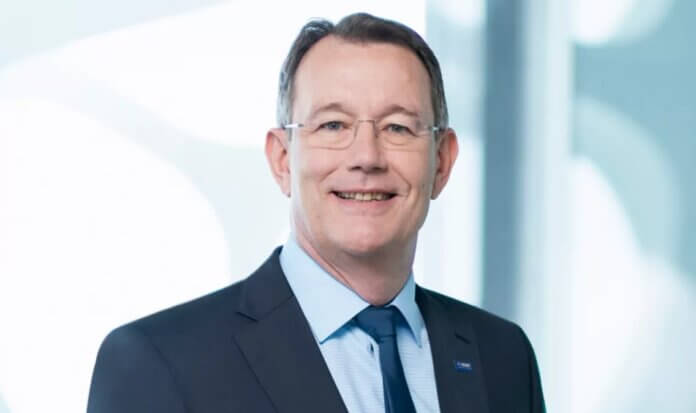Ameresco’s projects will join the growing fleet of BESS in SCE’s service area. Image: Convergent Energy + Power.
Ameresco and Southern California Edison’s (SCE’s) teams are “working around the clock,” to deliver a 2.1GWh, three-site battery storage portfolio by the end of this year, according to Ameresco’s CEO.
Energy efficiency and renewables solutions company Ameresco reported its second quarter financial results on Monday (1 August). In a conference call to discuss results, CEO and president George Sakellaris offered an update on the project with investor-owned utility SCE, one of the biggest battery storage buildouts ever contracted.
The company is currently also working on its biggest solar-plus-storage project deal to date. Ameresco has partnered with developer Bright Canyon on Kūpono Solar, which will pair 48MW of solar PV with 42MW/168MWh of batteries in O’ahu, Hawaii. The project will be connected to utility Hawaiian Electric’s (HECO’s) grid.
As reported by Energy-Storage.news in June, a 37-year land lease for Kūpono has been signed with the Department of Navy for the site at Pearl Harbor base, and its 20-year power purchase agreement (PPA) with HECO has been approved by Hawaii’s regulatory Public Utilities Commission (PUC).
Bright Canyon will retain an equity ownership in the asset, with the construction and commissioning expected to be completed early in 2024, the CEO said during the call. It’s the first project Ameresco and Bright Canyon have worked together on, but more are likely to come, Sakellaris said.
Ameresco Projects revenues drive overall growth once again
The two projects currently fall into Ameresco’s Projects business line, one of four business lines for the company.
A doubling in second quarter revenue was led by growth in Projects, with Ameresco involved in projects in other areas including LED lighting retrofits for towns and energy conservation work for US Federal agencies including the military.
During the quarter, Ameresco was also awarded a 6MW/6MWh battery energy storage system (BESS) supply contract for pairing with an existing 18.6MW solar PV array at Fort Detrick Army Garrison in Maryland.
In Q2 2022, Ameresco reported US$489.1 million in Projects revenues, a big jump year-on-year from Q1 2021’s US$196.3 million. Net income from the business line was US$15.8 million, again, a step up from the previous year when it stood at US$10.4 million, and adjusted EBITDA of US$29.2 million for the quarter just gone versus US$11.3 million in the previous year’s equivalent period.
The company’s total revenues across all lines including Projects, Energy Assets, O&M and Others added up to US$577.4 million for Q2 2022, more than double total Q1 2021 revenues of US$273.9 million. This was accompanied by a year-on-year rise in net income and adjusted EBITDA, with Q2 2022 net income standing at US$32.2 million against US$13.7 million in Q1 2021, and adjusted EBITDA at US$60.3 million compared to US$34.4 million the year before.
As of the end of the reported period on 30 June 2022, awarded project backlog stood at a value of US$1,829 million and contracted project backlog at US$1,003 million, although it must be noted these figures include projects across all technologies and not just battery storage.
Ameresco reiterated previously offered guidance for full-year revenues to be in the range of US$1.83 billion to US$1.87 billion.
Rendering of a solar PV and battery project Ameresco is delivering for a municipal utility in Colorado. Image: Ameresco.
SCE project completion expected before end of this year
In March’s release of Q1 figures, Ameresco had said the SCE contract had accounted for the majority of a 36% increase in Project revenues in that period, with the company actively pursuing several other large battery project contracts in the wake of the award.
However, a month later in April, the company issued an update, revealing that factors including localised lockdowns in China and new rules on safe lithium battery transportation from the country had caused delays to the project’s execution. Ameresco invoked a force majeure clause in its contract with the utility.
One of the key reasons for Ameresco’s selection by SCE in 2021 had been its ability to complete the project along expedited timelines, with all three systems scheduled for substantial completion by the beginning of August, in time for California’s highest summer peak demand period.
Although that deadline has passed, CEO George Sakellaris said this week that 200MW to 300MW are expected to be in service by September. “Substantial progress” was made during the quarter despite challenges relating to COVID-19, supply chains and permitting, according to the CEO, who recently visited the three sites.
Around two-thirds of the batteries are now on site and the balance is already in transit and completion is expected by the end of this year.
Sakellaris said he was “very pleased by the extraordinary efforts of both the Ameresco and the Southern California Edison teams in working around the clock to deliver these battery storage projects this year”.
Continue reading










